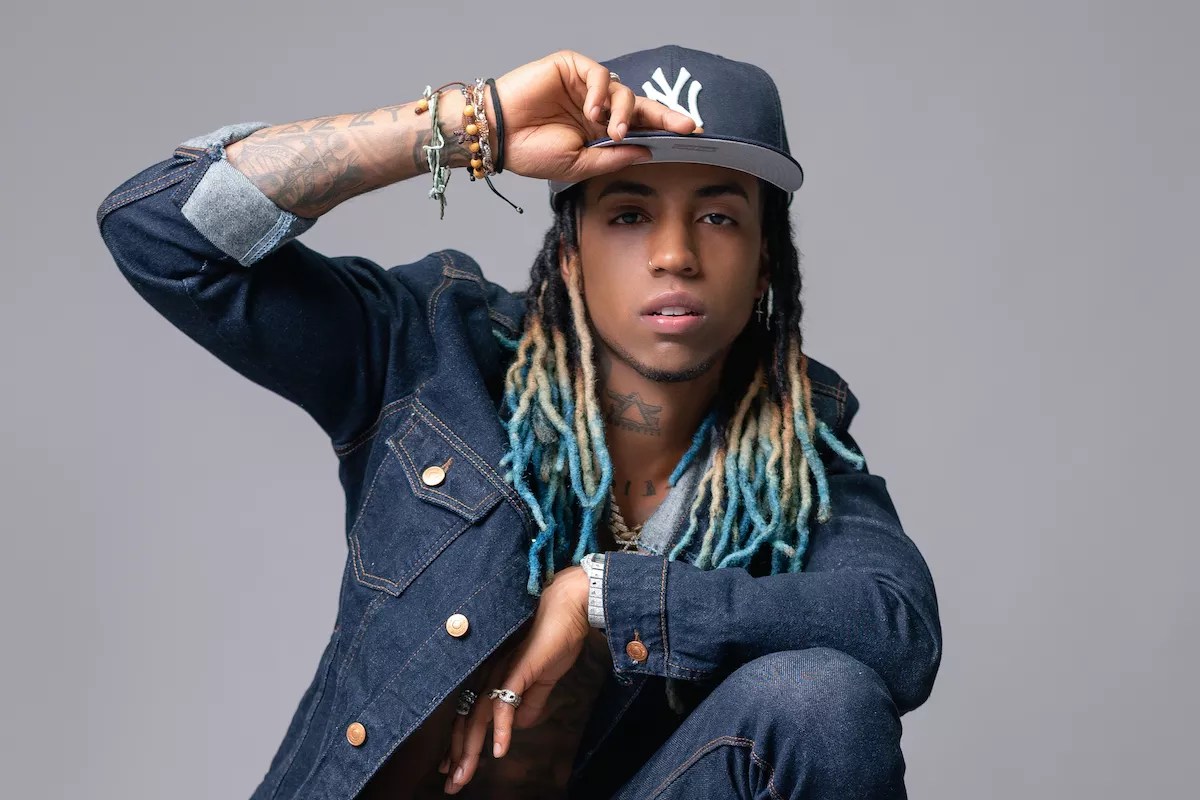
Photo courtesy of the artist

Audio By Carbonatix
If you judged Amenazzy’s latest EP by its title and cover art, you’d probably never guess that it’s laced with ribald sonic vignettes of romance, sex, and life on the streets. The cover art for Santo Niño, which translates to “holy child,” features an infant Amenazzy in a Jesus-like pose as beams of heavenly light emerge from his small chest and a gold crown sitting atop his head.
The Dominican rapper flirts with this steep contrast to present to the world both sides of his persona: Amenazzy the rapper and the human being – and where these identities meet or become strangers.
“The name Santo Niño comes from a sense of irony, because nothing on the album has anything to do with being a saint,” he tells New Times over Zoom from his home studio in Santiago, Dominican Republic. “Everything on the project is far from the concept of what the title of it actually really means. It’s explicit in which you will see a different Amenazzy. With this album, you’re going to hear a romantic side, explicit side, street side, and reggaeton side of Amenazzy. It’s also very interesting because all the songs are completely different from one another. Each song has a different rhythm, beat, and color to it.”
The eight-track EP is a mélange of different futuristic-yet-grounded beats that play as perfect orchestrated backdrops for the diverse catalog. On “Salió,” featuring Jay Wheeler, the melancholic intro gives way to the tale of a young woman scorned by love. Then there’s the fun and enchanting “Ahi Ahi,” featuring Don Miguelo, where the 25-year-old serenades his favorite girl by telling her how he’d like to explore her body.
And, yes, it gets dirtier.
The penultimate track, “No Me Falles,” presents a sonic love story between Dominican rapper Tokischa and Amenazzy in which both promise to leave their old ways for each other. Tokischa gives up promiscuity; Amanezzy trades the streets for intimacy.
“Tokischa takes the explicit and makes it into art,” Amanezzy says of his collaborator. “So I wanted that challenge to swim in those waters and express that side of myself. This song is dirty and musical.”
In the Dominican Republic, Tokischa has stirred controversy for her frank discussion of sexual body politics and drug use. Her music has even garnered the ires of censors, with Tokischa appearing on Univision’s Despierta América to defend her artistry against the conservative status quo.
Asked about the backlash Tokischa receives, Amanezzy plays devil’s advocate but ultimately co-signs the right to free expression.
“I respect why the authorities might want to censor her – for the sake of protecting a part of the society they don’t want to be [badly] influenced,” he says before pausing. “But at the end of the day, this is music, and we are not responsible for raising your kids. It doesn’t make any sense. Music is music, and it doesn’t mean it’s going to corrupt your children.”
Amid the creative freedom he basks in, Amenazzy has a tremendous belief in a higher power, whose scriptures often dictate how he lives and the choices he makes.
“I am a huge believer in the word of God. I did my senior year of high school in an evangelical Christian school, which is where I finalized my beliefs in God and my fear of God,” he says. “It was there that I understood that I had to have a respect for God and proceed with my life with caution. What I mean by caution is to be mindful that my actions here on earth don’t disrespect God in any way.
“I always speak to Him,” he continues. “I don’t necessarily pray, but I speak to Him as I would to one of my best friends. I am always thankful to Him, and we have a relationship that’s like a friendship.”
Born José Daniel Betances in Santiago de los Caballeros, Amenazzy made his musical debut at age 11 as “El Nene” when he joined a group in his local community. He gained prominence in 2013 after collaborating with Los Mellos on the Track for “Despues del Party.” In 2014, he released the now-ubiquitous “La Chanty,” which samples Rich Gang’s “Lifestyle.” He also has a slew of collaborations with the likes of Don Omar, Farruko, Nicky Jam, Wiz Khalifa. G-Eazy, and Bad Bunny.
Another spiritual guide in Amenazzy’s life is his mother.
“My mom has always been really attentive and caring towards me since the beginning,” he says. “She’s always been on top of me about school and my educations. Now it has come to a point where we stopped being mother and son. Now, we’re more like brother and sister.”
For most of our conversation, Amenazzy is thoughtful and frequently pauses before responding to a question. He looks up at the ceiling as his multicolored dreads hang down from an oversized black winter hat. He appears a bit shy, aloof, and standoffish – but still cordial. Yet when delivering his answers, he does so with conviction.
Still, there is one thing he isn’t completely sure about: where his career might take him next.
“In five years, I wouldn’t know what to tell you because even for me, I’d like that to be a surprise,” he says. “Whatever happens in my career in five to ten years, I want to leave it up to fate and my destiny.”